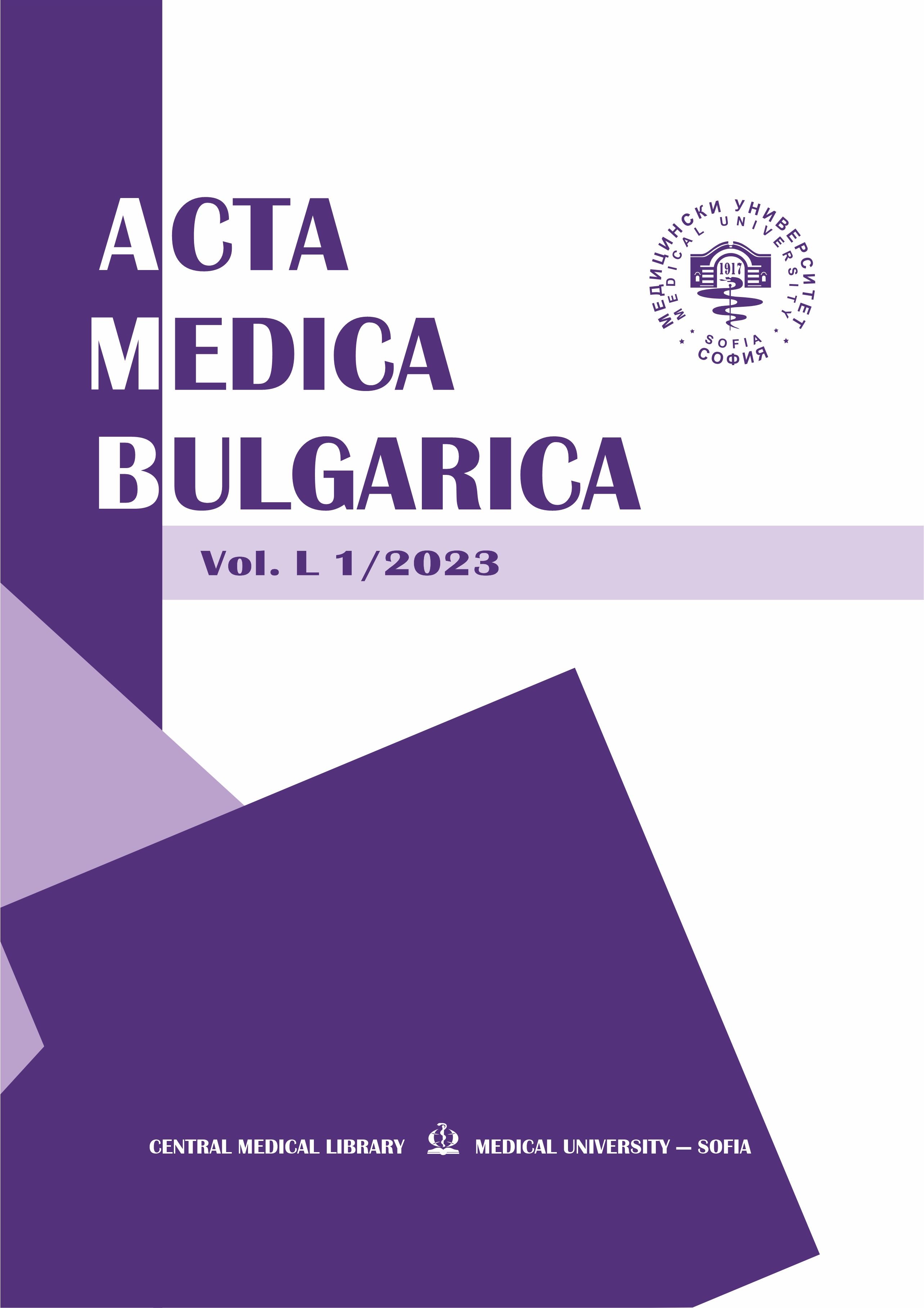Antiproliferative Activity of Natural Flavonoid Fustin Isolated from the Heartwood of Cotinus Coggygria Scop. Against Breast and Colon Cancer Cell Lines
DOI:
https://doi.org/10.2478/AMB-2023-0004Keywords:
fustin, C. coggygria Scop., antiproliferative effect, MDA-MB-231, MCF7, Colon 26Abstract
Background and objective
Cotinus coggygria Scop. is a valuable medicinal plant species with pronounced pharmacological potential due to its numerous biological activities. The herb is characterized by a high content of polyphenols among which is fustin. The anticancer activities of fustin, however, are extremely weakly studied. The aim of the present study was to investigate the in vitro antiproliferative potential of fustin isolated from the heartwood of C. coggygria against cell lines originating from two of the most common cancer types – breast (MDA-MB-231 and MCF7), and colon cancer (Colon 26).
Materials and methods
Cell growth inhibitory properties of fustin were examined by MTT assay. Subsequently, phase-contrast and fluorescence microscopy analysis as well as colonyforming assay were carried out on the most sensitive to the cytostatic action of the fustin cell line.
Results
The obtained results showed that fustin reduced the proliferation of all studied cell lines. The highest cytostatic effect was registered towards breast cancer MDA-MB-231 cells with a half maximal inhibitory concentration (IC50) value of 56.02 μg/ml followed by colon cancer cells with an IC50 of 78.07 μg/ml. MCF7 cell proliferation was least affected with a calculated IC50 of 187.8 μg/ml. Further investigations on breast cancer MDA-MB-231 cells indicated decreased density of cell monolayer and some morphological alterations, significant attenuation in the number of viable cells, and diminished clonogenic ability of cells after fustin exposure.
Conclusion
It could be concluded that fustin isolated from the heartwood of medicinal plant C. coggygria possesses marked antiproliferative properties against breast cancer cell line MDA-MB-231 which will be a subject of our more detailed future investigations.
References
Ferlay J, Colombet M, Soerjomataram I et al. Cancer statistics for the year 2020: An overview. Int J Cancer, 2021;149(4):778-789.
Antal DS, Ardelean F, Jijie R et al. Integrating Ethnobotany, Phytochemistry, and Pharmacology of Cotinus coggygria and Toxicodendron vernicifluum: What Predictions can be Made for the European Smoketree?. Front Pharmacol, 2021;12:662852.
Matić S, Stanić S, Mihailović M, Bogojević D. Cotinus coggygria Scop.: An overview of its chemical constituents, pharmacological and toxicological potential. Saudi J Biol Sci, 2016;23(4):452-461.
Valianou L, Stathopoulou K, Karapanagiotis I et al. Phytochemical analysis of young fustic (Cotinus coggygria heart-wood) and identification of isolated colourants in historical textiles. Anal Bioanal Chem, 2009;394:871-882.
Antal D, Schwaiger S, Ellmerer-Muller E, Stuppner H. Cotinus coggygria wood: novel flavanone dimer and development of an HPLC/UV/MS method for the simultaneous determination of fourteen phenolic constituents. Planta Med, 2010;76:1-8.
Novakovic M, Djordjevic I, Todorovic N et al. New aurone epoxide and auronolignan from the heartwood of Cotinus coggygria Scop. Nat Product Res, 2019;33(19):2837-2844.
Guardia T, Rotelli AE, Juarez AO, Pelzer LE. Anti-inflammatory properties of plant flavonoids. Effects of rutin, quercetin and hesperidin on adjuvant arthritis in rat. Farmaco, 2001;56(9):683-687.
Chahar MK, Sharma N, Dobhal MP, Joshi YC. Flavonoids: A Versatile Source of Anticancer Drugs. Pharmacogn Rev, 2011;5:1-12.
Kumazoe M, Fujimura Y, Yoshitomi R et al. Fustin, a Flavanonol, Synergically Potentiates the Anticancer Effect of Green Tea Catechin Epigallocatechin-3-O-Gallate with Activation of the eNOS/cGMP Axis. J Agric Food Chem, 2022;70(11):3458-3466.
Milosavljevic S, Djordjevic I, Mandic B et al. Flavonoids of the Heartwood of Cotinus coggygria Scop. Showing Protective Effect on Human Lymphocyte DNA. Nat Prod Commun, 2021;16(12):1-8.
Mosmann T. Rapid colorimetric assay for cellular growth and survival: application to proliferation and cytotoxicity assays. J Immunol Methods, 1983;65(1-2):55-63.
Gospodinova Z, Bózsity N, Nikolova M et al. Antiproliferative Properties Against Human Breast, Cervical and Ovarian Cancer Cell Lines, and Antioxidant Capacity of Leaf Aqueous Ethanolic Extract from Cotinus coggygria Scop. Acta Med Bulg. 2017;44(2): 20-25.
Malhotra V, Perry MC. Classical chemotherapy: mechanisms, toxicities and the therapeutc window. Cancer Biol Ther, 2003;2:S2-S4.
Kopustinskiene DM, Jakstas V, Savickas A, Bernatoniene J. Flavonoids as Anticancer Agents. Nutrients, 2020;12(2):457.
Rodriguez-Garcia C, Sanchez-Quesada C. Dietary flavonoids as cancer chemopreventive agents: an updated review of human studies. Antioxidants, 2019;8(5):137.
Abotaleb M, Samuel SM, Varghese E et al. Flavonoids in Cancer and Apoptosis. Cancers, 2018;11(1):28.
Perez-Vizcaino F, Fraga CG. Research trends in flavonoids and health. Arch Biochem Biophys, 2018;646:107-112.
Downloads
Published
Issue
Section
License
Copyright (c) 2023 Acta Medica Bulgarica

This work is licensed under a Creative Commons Attribution-NonCommercial-NoDerivatives 4.0 International License.
You are free to share, copy and redistribute the material in any medium or format under these terms.


 Journal Acta Medica Bulgarica
Journal Acta Medica Bulgarica 